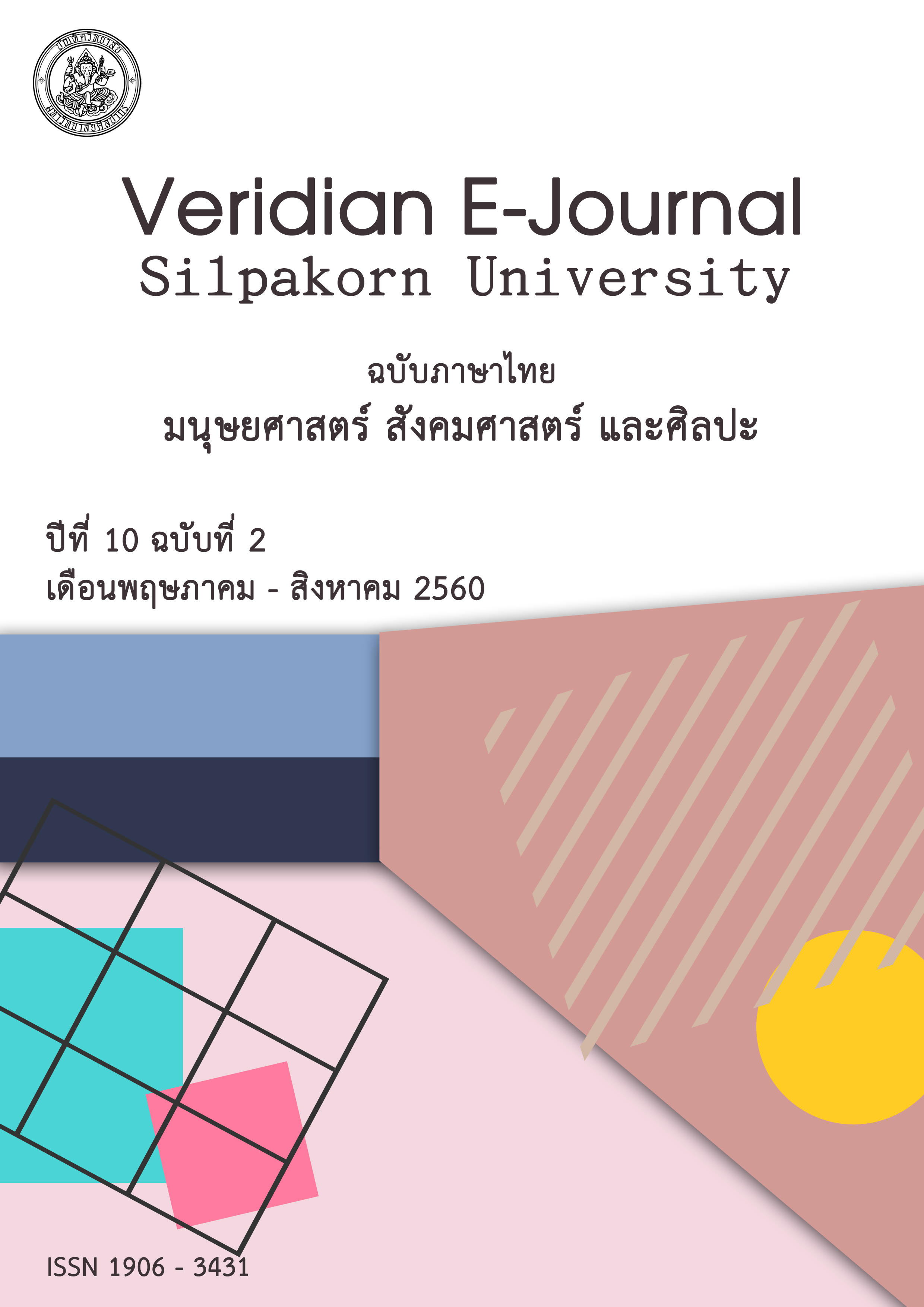คุณภาพชีวิตในโรงเรียนของนักเรียนมัธยมศึกษาตอนปลายในโรงเรียนราชประชานุเคราะห์ สังกัดสำนักบริหารงานการศึกษาพิเศษ
Main Article Content
Abstract
การวิจัยนี้มีวัตถุประสงค์เพื่อ 1) ศึกษาบทบาทหน้าที่ของโรงเรียนในการพัฒนาคุณภาพชีวิตของนักเรียนมัธยมศึกษาตอนปลาย 2) ศึกษาระดับคุณภาพชีวิตในโรงเรียนของนักเรียนมัธยมศึกษาตอนปลาย3)เปรียบเทียบคุณภาพชีวิตในโรงเรียนของนักเรียนมัธยมศึกษาตอนปลาย และ 4) ศึกษาความสัมพันธ์ระหว่างบทบาทหน้าที่ของโรงเรียนในการพัฒนาคุณภาพชีวิตกับคุณภาพชีวิตในโรงเรียนของนักเรียนมัธยมศึกษาตอนปลายในโรงเรียนราชประชานุเคราะห์ สังกัดสำนักบริหารงานการศึกษาพิเศษ กลุ่มตัวอย่างที่ใช้ในการวิจัยครั้งนี้ ได้แก่ นักเรียนระดับชั้นมัธยมศึกษาตอนปลายที่ศึกษาในโรงเรียน ราชประชานุเคราะห์ สังกัดสำนักบริหารงานการศึกษาพิเศษ ภาคเรียนที่ 1 ปีการศึกษา 2559 จำนวน 367 คน ใช้การสุ่มอย่างง่าย เครื่องมือที่ใช้ในการวิจัยเป็นแบบสอบถามเป็นแบบสำรวจรายการ มีค่าความเชื่อมั่นเท่ากับ 0.958 สถิติที่ใช้ในการวิเคราะห์ข้อมูล ได้แก่ มีค่าความเชื่อมั่นเท่ากับ 0.818 สถิติที่ใช้ในการวิเคราะห์ข้อมูลคือ ความถี่ ค่าร้อยละ ค่าเฉลี่ย ส่วนเบี่ยงเบนมาตรฐาน การทดสอบค่าที วิเคราะห์แปรปรวนทางเดียว และค่าสัมประสิทธิสหสัมพันธ์ของเพียร์สัน ผลการวิจัยพบว่า 1) บทบาทหน้าที่ของโรงเรียนในการพัฒนาคุณภาพชีวิตของนักเรียนมัธยมศึกษาตอนปลายในภาพรวมอยู่ในระดับมาก เรียงลำดับจากมากไปน้อย ได้แก่ การส่งเสริมทางสติปัญญา รองลงมาคือ การส่งเสริมพัฒนาการทางสังคม การส่งเสริมพัฒนาการทางกาย และการส่งเสริมพัฒนาการทางอารมณ์ 2) ระดับคุณภาพชีวิตของผู้เรียนในโรงเรียนราชประชานุเคราะห์ ในภาพรวมอยู่ในระดับมาก เรียงลำดับจากมากไปน้อย ได้แก่ ด้านอารมณ์และจิตใจ รองลงมาคือ ด้านร่างกาย ด้านสัมพันธภาพระหว่างนักเรียนกับเพื่อนในโรงเรียน ด้านสัมพันธภาพระหว่างนักเรียนกับครู ด้านสิ่งแวดล้อมภายในโรงเรียน และด้านวิชาการ 3) การเปรียบเทียบระดับคุณภาพชีวิตในโรงเรียนของนักเรียนมัธยมศึกษาตอนปลาย พบว่า สถานภาพสมรสของผู้ปกครองนักเรียนและสัมพันธภาพระหว่างนักเรียนกับผู้ปกครองต่างกัน มีความคิดเห็นต่อคุณภาพชีวิตในโรงเรียนของนักเรียนมัธยมศึกษาตอนปลายในโรงเรียนราชประชานุเคราะห์ โดยรวมแตกต่างกันอย่างมีนัยสำคัญทางสถิติที่ระดับ 0.05 และ 4) ความสัมพันธ์ระหว่างบทบาทหน้าที่ของโรงเรียนในการพัฒนาคุณภาพชีวิตกับระดับคุณภาพชีวิตในโรงเรียนของนักเรียนมัธยมศึกษาตอนปลายในโรงเรียนราชประชานุเคราะห์ โดยรวมมีความสัมพันธ์กันทางบวกในระดับปานกลาง อย่างมีนัยสำคัญทางสถิติที่ระดับ 0.05 โดยมีค่าสัมประสิทธิ์เท่ากับ (r) 0.751
The research aimod to 1) study schools’ roles and functions on developing QOL of upper secondary education students, 2) investigate the level of QOL in school of upper secondary education students, 3) compare QOL in school of upper secondary education students, and 4) examine the relationship between schools’ roles and functions on developing QOL and the level of QOL in school of upper secondary education students in Rajaprajanugroh Schools under Special Education Bureau. The research samples selected by using simple random sampling method, were 367 upper secondary education students studying in the first semester of academic year 2016 in Rajaprajanugroh Schools under Special Education Bureau. The research tool was a 5-level rating scale questionnaire with reliability level at 0.818. The data were analyzed by using percentage, mean, standard deviation, t-test, one-way ANOVA, and Pearson’s Product moment correlation coefficient. The research results were as follows: 1) the schools’ roles and functions on developing QOL of upper secondary education students in overall were at a high level. The aspects of schools’ roles and functions on developing QOL could be ranked in descending order of their means as follows: promotion of intellectual, social, physical, and emotional development, 2) the QOL in school of upper secondary education students in overall was at a high level. The aspects of QOL in school of students could be ranked in descending order of their means as follows: physical aspect, relationship between students and their friends, relationship between students and their teachers, environment in schools, and academic aspect, 3) the opinion on QOL in school of upper secondary education students in Rajaprajanugroh Schools of the students’ parents with different marital status was different with statistical significance at the 0.05 level, and 4) there was positive relationship at a moderate level with statistical significance at the 0.05 level, correlation coefficient (r) = 0.751, between schools’ roles and functions on developing QOL and the level of QOL in school of upper secondary education students in Rajaprajanugroh Schools.

